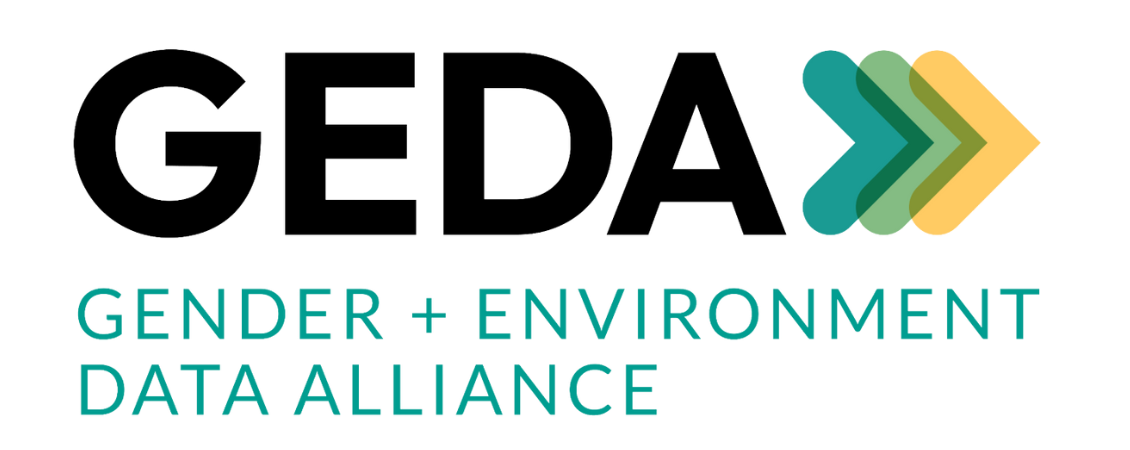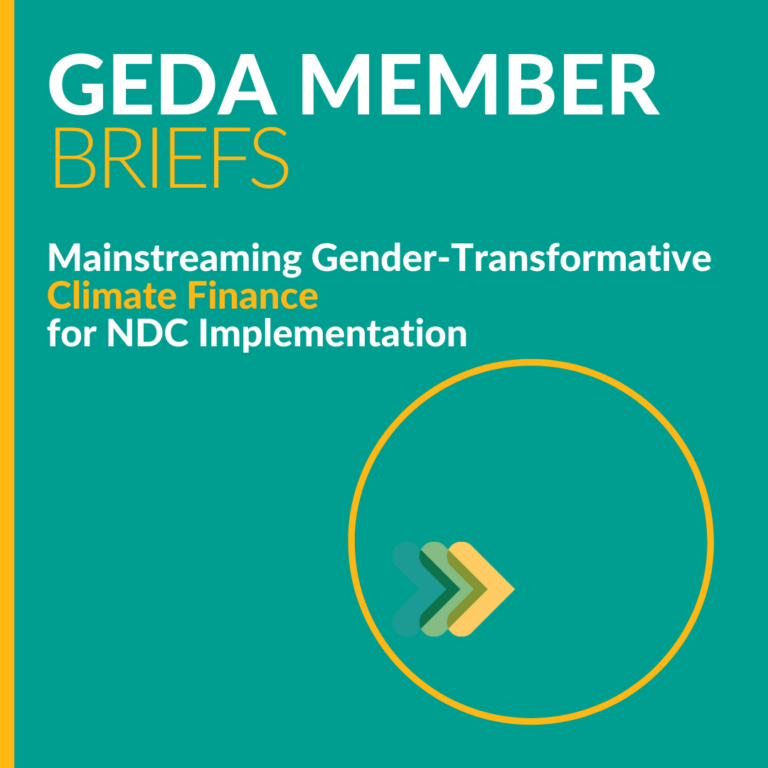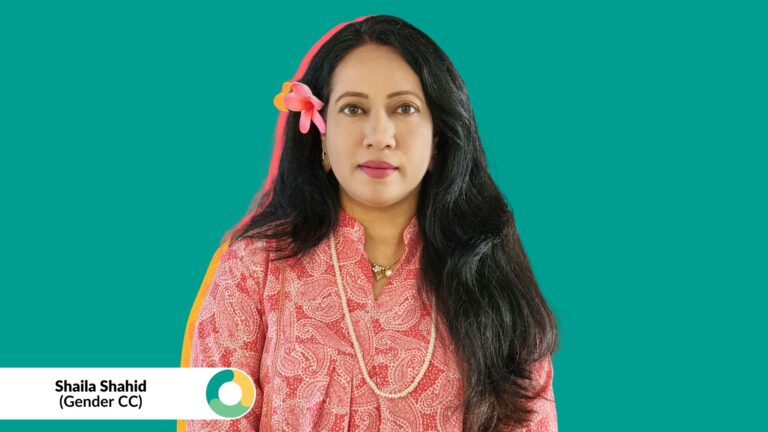
In 2024, the United Nations Framework Convention on Climate Change (UNFCCC) will review the enhanced Lima work programme on gender (LWPG) and its gender action plan (GAP). The UNFCCC adopted these in 2019, building on previous iterations adopted in 2014 (LWPG) and 2017 (GAP). The GAP presents objectives and activities under five priority areas, to: “Advance knowledge and understanding of gender-responsive climate action and its coherent mainstreaming in the implementation of the UNFCCC and the work of Parties, the secretariat, United Nations entities and all stakeholders at all levels, as well as women’s full, equal and meaningful participation in the UNFCCC process.” (1)
The Gender and Environment Data Alliance (GEDA), a network of 90 organizations, views the GAP as instrumental in catalyzing gender-responsive climate action. An increase in the accessibility, uptake, and application of gender-environment data will amplify the impact and effectiveness of the next phase of the GAP. Parties to the UNFCCC agree: 77% of the most recent submissions from governments on the GAP mentioned gender data, indicating a significant interest in its prioritization. This brief supports the implementation of increased gender-environment data for the GAP by presenting analysis and recommendations, including concrete language examples to support Parties in their formulations of new text.

GENDER DATA
What do we mean by “gender-environment data”? Gender-environment data is data (quantitative and qualitative) related to environmental issues and impacts, activities and programmes that are disaggregated by gender (2), and/or reflect gender issues.
Why is it important? A persistent shortage of gender and environment data hinders action and policy to advance both climate action and gender equality. The increased production and use of this data will help build understanding of how gender issues intersect with the causes, impacts, and actions around climate change, and therefore the creation of more evidence-based and better-informed policy.
Where do we see data in the GAP?
Where do we see data in the GAP? The current GAP recognizes the value of data for gender-responsive climate action, integrating it into several priority areas.
Data is explicitly mentioned in Priority areas A and D:
“Enhance capacity-building for governments and other relevant stakeholders to collect, analyze and apply sex-disaggregated data and gender analysis in the context of climate change” (Activity A.3)
“Enhance the availability of sex-disaggregated data for gender analysis, taking into consideration multidimensional factors to better inform gender-responsive climate policies, plans, strategies and action” (Activity D.7 and related Deliverable D.7)
While not explicitly mentioned, data underpins several objectives in Priority areas A and E:
“Strengthen the evidence base and understanding of the differentiated impacts of climate change on men and women and the role of women as agents of change and on opportunities for women” (Activity A.3)”
- “Strengthen the monitoring and reporting on women in leadership positions within the UNFCCC process…” (Activity E.1)
- “Monitor and report on the implementation of gender-responsive climate policies, plans, strategies and action…” (Activity E.2)
- “Support the review of the Lima work programme on gender and its gender action plan” (Activity E.3)
Throughout the GAP, monitoring and reporting mechanisms focus on the delivery of activities but lack corresponding targets and indicators, preventing effective tracking of progress on gender-responsive climate action.
What are we advocating for?
- In recognition and support of the existing data-related activities, the new iteration of the GAP should elevate attention to gender data to enhance accountability, ensure specific focus is given to areas with evident data gaps, and to better track implementation and progress of gender-responsive climate actions.
- This includes strengthening the monitoring and evaluation framework of the GAP.
Recommendations
- Establish specific, measurable, achievable, relevant and time-bound targets and indicators for all priority areas and activities. Indicators should also measure process, such as funding allocation and utilization.
- Consider the creation of a standalone priority area on the production and use of gender and climate data.
- Integrate gender data in efforts to enhance coherence and mainstream gender across UNFCCC processes and mechanisms, to enable better use of existing gender data both within and beyond the GAP.
INTERSECTIONALITY
What do we see in the GAP?
- The current GAP uses traditional binary language of “women” and “men,” without recognizing gender and sexual diversity.
- While it recognizes the “gender-differentiated” impacts of climate change (deliverable under A.4), the GAP uses the term sex-disaggregated data, referring to biological specifications of male and female, instead of gender-disaggregated data.
- This narrow view of the data landscape also precludes additional factors of intersectionality, like income, age, ethnicity, disability, Indigenous identity, or sexual orientation, among others.
What are we advocating for?
The GAP should adopt an intersectional approach to gender-responsive climate action, which acknowledge and consider the different impacts, needs, and experiences of people based on their gender and other systems and structures that force them into situations of vulnerability.
- The use of gender-disaggregated data, to include the realities of LGBTQIA+ people, avoid perpetuating discrimination, and catalyze equality.
- This more expansive understanding of gender in the GAP must be accompanied by capacity strengthening and shifts in national statistics collection to enable comprehensive, equitable, and safe consideration of gender data collection, storage, and use.
- Gender data production and use must safely incorporate other intersecting identities such as age, ethnicity, and indigeneity, to effectively capture the diverse realities of all people, guided by internationally recognized guidelines for data collection that ensure privacy and protection. (3)
When has it worked?
When inviting participants to register for a webinar, the UNFCCC Secretariat asks for the gender of the participants, and provides space for individuals to self-identify rather than checking “male” or “female.”
Language Recommendations
- Activity A.3: “Enhance capacity-building for governments and other relevant stakeholders to collect, analyse and apply gender-disaggregated sex-disaggregated data and gender analysis in the context of climate change”.
- Activity A.4: “Strengthen the evidence base and understanding of the differentiated impacts of climate change on people in vulnerable situations, including but not limited to indigenous peoples, local communities, migrants, children, and persons with disabilities based on their gender and sexual orientation and their role as agents of change and on opportunities for women”.
- Activity D.7: “Enhance the availability of gender-disaggregated sex-disaggregated data for intersectional gender analysis, taking into consideration multidimensional factors to better inform gender-responsive climate policies, plans, strategies and action, as appropriate”.
DATA COLLECTION
What do we see in the GAP?
- None of the gender data-related activities specify quantitative and qualitative data collection in the activity or deliverable.
- With the exception of activity E.1 (see below), given that there are no targets or indicators, the only way to assess progress in data collection is through voluntary submissions (e.g. activity A.3) and the progress reports produced by the Secretariat (e.g. activity E.3). The upcoming final review on progress report is the only measurement of impact for those activities, making it even more difficult to assess progress on data production and gaps.
- Different methodologies for data collection, such as feminist participatory action research, are not mentioned, limiting the valuation and prioritization of these approaches in favor of national statistical systems methods.
- In the current GAP, there is no recognition of the potential of non-traditional data sources like geospatial information, big data, community data and citizen-generated data, as well as Indigenous Peoples’ knowledge and data production systems.
What are we advocating for?
- The GAP should promote the use of non-conventional data sources within data collection efforts, to enhance the comprehensiveness and timeliness of data sources and collection processes.
- The new GAP should center decolonial and participatory practices, enhancing accessibility and considering contextual knowledge. The integration of qualitative data approaches, such as feminist participatory action research, allows for a more nuanced understanding of power dynamics and the diversification of knowledge. It is also crucial for participants in data generation to be also involved in its use, to avoid inherently extractive systems and return the data to the communities themselves.
When has it worked?
The UNFCCC Secretariat regularly collects and publishes data on the gender and age of COP Party delegations and constituted bodies in its annual Gender Composition Report. Though this data has inherent limitations–quantitative measures do not capture the quality and meaningfulness of participation–it assists Parties in tracking their progress towards the goal of gender balance in climate change negotiations, and has contributed to making the case for more equal participation and leadership of women in UNFCCC processes. The expert dialogue at SB58 on constituted bodies and gender included presentations and examples of how they have integrated gender, providing useful qualitative data. The Secretariat also published a report on good practices (under activity C.2) with valuable qualitative data.
Language Recommendation
(Deliverable under activity E.1) “Inclusion of additional information in gender composition report, including quantitative and qualitative data”
CONCLUSION
Increasing the production, collection, and use of gender-environment data is essential to inform gender-responsive climate policy. Including clear and strong language on gender-environment data throughout the Gender Action Plan can guide and encourage Parties to strengthen their capacity for analyzing data and monitoring gender-responsive climate action.
This echoes and advances the Call to Action from the Global Conference on Gender and Environment Data, a powerful recognition by governments, UN agencies and other gender-environment data actors (including GEDA!) of the importance of gender-environment data. The Call to Action outlines concrete and collective steps to support its progress, including around production, uptake, financing, inclusivity, and partnerships.

SUBMISSIONS TO THE GAP
In response to mandate FCCC/CP/2023/11/Add.2, para 2, the following members of GEDA submitted inputs on progress, challenges, gaps and priorities in implementing the GAP to the Secretariat: WEDO on behalf of the WGC (2024), IUCN, Data2X, OutForSustainability, NAP Global Network, Landesa, Society of Gender Professionals and Women Deliver.
(1) UNFCCC. (2019). Decision 3/CP.25, Enhanced Lima work programme on gender and its gender action plan. Additional background information available via the Women and Gender Constituency here.
(2) Sex-disaggregated data is data collected and analyzed based on the binary male and female. Gender-disaggregated data goes beyond the binary, documenting gender identities and roles.
(3) Indicators to guide the generation of data that is disaggregated by sexual orientation, gender identity, gender expression, and sex characteristics (SOGIESC) include the World Bank’s set of Proposed Indicators for the LGBTI Inclusion Index) and the recommendations issued by the UN Independent Expert on Sexual Orientation and Gender Identity.







